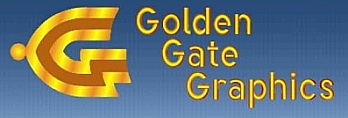
by John Walt Childers, IPC-CID, Founder of Golden Gate Graphics
Formerly known as
This glossary has key terminology in use in PCB design and manufacturing, with a smattering of electronics. The definitions were chosen so that their context would likely apply to reading material encountered by a PCB designer. Therefore, many of these terms will have other meanings not given here. See recommended dictionaries below.
This collection of terms came about as I, a PCB designer, ran across words and acronyms in my field for which meanings were hard to find. As I tracked them down, I made them part of this glossary. If you are a PCB designer, then this glossary could be a good place to start when you find a need to look up the meanings of words related to printed circuits or electronics.
.pdf
0
1
2.5D Integrated Circuits
3D Integrated Circuits
2581
(LF)(SN)
.pdf — File extension for Portable Document Format. Adobe® Acrobat® format. In ordinary text (i.e., in uses other than filename extensions or directory names), the acronym is almost universally capitalized. Stammtisch Beau Fleuve Acronyms PDF, .pdf
↑ Page Index
0 — a voltage state close enough to "zero Volts" to be recognized as a 0 (or false or off or low) in an electronic representation of the binary number system. By zero Volts is meant that the potential between two points has a difference of zero or very close to that. A reference potential for a circuit, often called Ground, is considered to be zero volts within its system. It could have a potential other than zero Volts when compared to other systems. For example, Earth could have a different potential than the Ground of an electronic circuit, unless that Ground is connected to Earth. The Ground would still be considered zero Volts, because it has a uniform potential, always the same, throughout the system of that particular electronic circuit.
↑ Page Index
1 — a voltage state high enough above 0 (zero) to be recognized as a 1 (or true or high) in an electronic representation of the binary number system. The actual voltage depends on the supply voltage system. For many years, this was +5 Volts. As technololy advanced, lower voltages came to be used to provide a distinction between 1 and 0.
↑ Page Index
2.5D Integrated Circuits — Semi-conductor Manufacturing The technologies of Chip package, Multi-Chip Module, hybrid and System in Package all fall under the realm of 2D (two-dimensional) ICs, because the die or dice are mounted in the package in a single plane.
The main difference between a traditional 2D IC/SiP and a 2.5D IC/SiP is that, in the case of the 2.5D version, a silicon interposer is placed between the SiP substrate and the dice, where this silicon interposer has through-silicon vias (TSVs) connecting the metallization layers on its upper and lower surfaces.
At this point, you need some illustrations, so go to the source of this definition:
["2D vs. 2.5D vs. 3D ICs 101" Clive Maxfield http://www.eetimes.com/document.asp?doc_id=1279540]
With a 2.5D Integrated Circuit, the dice are attached to the silicon interposer using micro-bumps, which are ~10um in diameter. Meanwhile, the silicon interposer is attached to the SiP substrate using regular flip-chip bumps, which will be ~100um in diameter. The tracks on the silicon interposer’s topside and backside metal layers (there can be multiple metal layers in both cases) are created using the same processes as the tracks on the silicon chips.
Although the silicon interposer and the silicon dice in the 2.5D Sip image in Clive's article appear to be a little "chunky," you have to remember that this drawing is not to scale. In reality, the dice are only ~0.2mm thick, while the silicon interposer is not much thicker.
As one example of the use of this technology, the Xilinx Virtex-7 2000T device has four FPGA dice attached to a silicon interposer, which supports ~10,000 silicon-speed connections between adjacent dice.
The advantage of using 2.5D IC/SiP technology is that it’s an incremental step from traditional 2D IC/SiP technology that offers tremendous increases in capacity and performance. There are also yield advantages, because it’s easier to make a number of small dice as opposed to a single large one. The main disadvantage is that it’s non-trivial to make all of this work ("If it was easy, everyone would be doing it," as the old saying goes). (See also 3D integrated circuits in tho same article from Clive Maxwell.)
["2D vs. 2.5D vs. 3D ICs 101" Clive Maxfield http://www.eetimes.com/document.asp?doc_id=1279540]
↑ Page Index
3D Integrated Circuits — Semi-conductor Manufacturing In a modern context, what we might call a “True 3D IC” will involve at least one die being mounted on the top of another die, with the lower die employing through-silicon vias (TSVs) to allow the upper die to communicate with the lower die and the SiP substrate as illustrated below:
The previous image showed the simplest example of this technology. My own personal interpretation of a “True 3D IC” would be one in which multiple dice are stacked on top of each other using TSVs, and multiple groups of dice are connected together using a silicon interposer, all mounted in a single SiP as illustrated below:
["2D vs. 2.5D vs. 3D ICs 101" Clive Maxfield https://www.eetimes.com/document.asp?doc_id=1279540]
↑ Page Index
2581 — IPC-2581 aka IPC-DPMX Digital Product Model eXchange. PCB designs can be output for manufacturing to to IPC-2581 format, rather than Gerber and drill files, fab and assembly drawings and also rather than ODB++.
↑ Page Index
(LF)(SN) — A JST part number suffix. (LF)(SN) = Lead-free with a 100% pure tin finish [SN is the Periodic Table of Elements symbol for tin].
JST Suffixes LF SN AU S N M prefixes G W C Q D
↑ Page Index
Terms that begin with a symbol or a digit are placed in the SYMBOLS page. Terms that contain digits within them are alphabetized as if the numeric
characters were spelled in English.
Terms with two or more words are alphabetized "dictionary style." They are alphabetized as though the spaces between the terms have been removed.
If there are other characters in the term, such as a slash (/), dash (-) or plus sign (+), these are treated the same as spaces and ignored for the purpose of alphabetizing.
This is the best, most usable dictionary for electronics, because its
definitions help you grasp the terms and therefore the subject. Lesser
dictionaries define electronics terms with even more difficult technical
jargon, leading one into endless"word chains." Not this one.
You can
buy the Modern Dictionary of Electronics new or used
via the Internet.
You need a big, comprehensive dictionary. Get this one. Despite being a big dictionary, The Random House has great definitions, quick to grasp.
Although out of print, as of 2022 you could still buy a great used copy online for $40 including shipping or possibly for much less. Two versions are available of the 2nd Edition, Unabridged:
